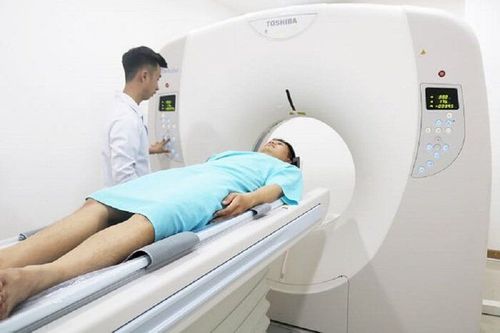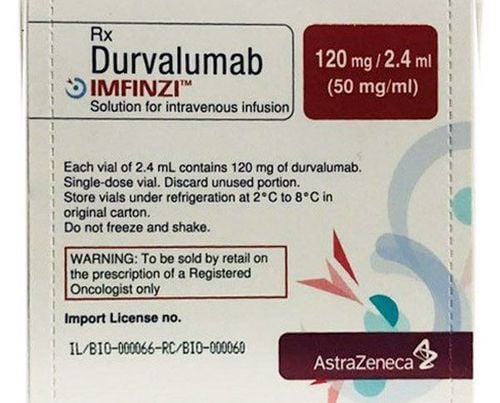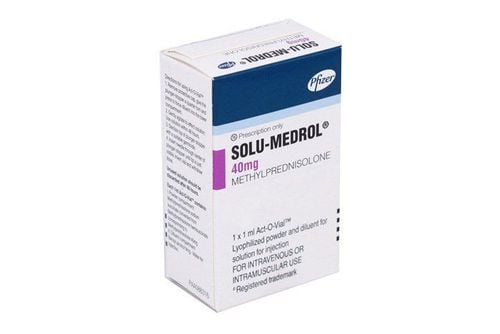This is an automatically translated article.
The article was written by doctors from Internal Oncology Department - Vinmec Times City International General Hospital.Chronic obstructive pulmonary disease (COPD) - a group of diseases that includes alveolar dilatation and chronic bronchitis - is a significant risk factor for lung cancer. These two diseases make breathing difficult and reduce quality of life. According to a 2012 paper, about 1% of people with chronic obstructive pulmonary disease (COPD) develop lung cancer each year. However, the concomitant effect of COPD and lung cancer on life expectancy is unknown. Just know that having COPD can worsen the progression of someone with lung cancer.
1. What is COPD?
COPD is the term for a group of lung diseases that tend to get worse over time. Examples include alveolar dilatation and chronic bronchitis.The lungs are composed of many tubes, air passages, which branch into smaller tubes. At the end of these airways are small air sacs that inflate and deflate during breathing.
When a person breathes in, oxygen moves down these tubes and through the vesicles into the bloodstream. When you exhale, carbon dioxide leaves the blood stream and goes out through the air sacs and airways.
In people with COPD, chronic pneumonia blocks the airways and can make breathing more difficult. COPD also causes coughing and increased mucus production, which can lead to congestion. The airways and air sacs may become damaged or less flexible.
The most common cause of COPD is smoking cigarettes or other tobacco products. According to studies, up to 75% of people with COPD smoke. However, long-term exposure to other irritants or toxic fumes can also cause COPD.
Genetics can also increase the risk of developing COPD. For example, people with alpha-1 antitrypsin protein deficiency may be more susceptible to COPD, especially if they smoke or are regularly exposed to other lung irritants.
Signs and symptoms of COPD usually begin in people 40 years of age and older.

Thuốc lá là nguyên nhân gây bệnh COPD
2. Studies
Research shows that there is a link between COPD and lung cancer. People with COPD are more likely to develop lung cancer, and people with lung cancer are more likely to develop COPD.Researchers don't fully understand why the two diseases are so strongly linked, but they think there are several factors that interact to increase the risk of lung cancer in people with COPD.
Smoking is a significant risk factor for both of these diseases. Most people with COPD have smoked at some point in their lives. Women who don't smoke are more likely to develop COPD than men who don't smoke.
Researchers have come up with several reasons to explain the link between these two diseases, including:
COPD-related lung damage : COPD causes significant damage to the lungs and gradually gets worse over time. time. This increases the risk of lung cancer due to increased abnormal cell growth. Lung cancer risk is still high in people with alveolarvae who have never smoked, suggesting a role that lung damage plays. more tobacco. Researchers have identified several genes that increase the risk of COPD or lung cancer in smokers
Inflammation : COPD increases lung inflammation, and potentially increases cancer risk. The inflammatory process also increases the risk of both COPD and cancer.
Despite this association, many people with COPD are unaware of their increased susceptibility to lung cancer.
A 2019 interview-based study of 40 people with COPD found that participants were unaware that they were at increased risk of cancer. Most participants attributed the changes in symptoms to COPD, rather than the need for lung cancer screening. People with COPD should report any symptom changes to their doctor.
Lung cancer may be easier to treat in its early stages. Even people with terminal cancer can live longer if treated early. Therefore, a lack of understanding of the link between lung cancer and COPD could shorten the lives of people with chronic respiratory disorders. Furthermore, the symptoms of COPD can resemble those of lung cancer, making early diagnosis more difficult.
Smoking is the biggest risk factor Image of lesions of patients with COPD on CT/thoracic scan to prevent both COPD and lung cancer.

Chụp CT/Scan lồng ngực
3. Risk factors
The biggest risk factor for both COPD and lung cancer is smoking.People who have smoked a lot in their life face the greatest risk. Quitting smoking reduces the risk of cancer. Even people who already have COPD can prolong life and improve quality of life by quitting smoking.
Some other lung cancer risk factors in people with COPD include:
Being over 60 years old History of tobacco use Low body mass index (BMI) Smoking longer than 60 years, smoking 20 cigarettes per day days People with new or worsening respiratory symptoms may also be at increased risk. People with COPD should not assume that cough, shortness of breath, unusual phlegm, or similar symptoms are the result of COPD. Regular medical check-ups can help people with COPD receive a timely lung cancer diagnosis.
The high mortality rate in people with both COPD and cancer suggests that cancer screening is more important for people with COPD than it is for people without the disease.
COPD is a chronic disease that gets serious over time. People with COPD are more likely to die from this disease than from other diseases. However, with early diagnosis and proper treatment, people can live for many years with COPD.
Lung cancer shortens the life of a person with COPD and reduces quality of life.
Although lung cancer can be fatal, early detection increases survival. The 5-year survival rate for lung cancer is 18.6%, but this rises to 56% when doctors find lung cancer before it has spread to other areas of the body.
Therefore, a person with COPD, even lung cancer can live many years if treated promptly. Because the symptoms of COPD are difficult to distinguish from other diseases, it is important to talk with your doctor to monitor your symptoms and progression.
COPD and lung cancer are both serious diseases that cause death. However, there should be no fear when diagnosing and treating the disease. Timely medical treatment will give sick people the opportunity to live longer, healthier lives.
Even with a terminal illness, the right treatment plan can help a person live more years with a higher quality of life.
Vinmec Cancer - Radiation Center is one of the centers in Vietnam that is fully equipped with cancer treatment models: From surgery, radiation therapy, chemotherapy, hematopoietic stem cell transplant, treatment pain and palliative care. The diagnosis is made carefully: blood tests, advanced imaging techniques such as: PET/CT, SPECT/CT, MRI..., blood-marrow test (when indicated), biopsy, immunohistochemical staining, diagnosis by molecular biology. The treatment process is closely coordinated with many specialties: Center for Diagnostic Imaging, Laboratory Testing, Cardiology, Department of Obstetrics and Gynecology, Department of Endocrinology, Department of Rehabilitation....
Diseases Before treatment, all patients are approved by a professional council (Multidisciplinary Tumor Board), with the participation of leading experts: Oncology Surgeon, Internal Oncologist, Oncologist, Pathologist, Diagnostic Imaging,...
Treatment protocols comply with international clinical practice guidelines (USA, Europe) (regularly updated), as well as consult oncology hospitals in the region and in the country (the basic protocol of the Ministry of Health of Vietnam) to bring about the most optimal cancer treatment results, suitable for each patient. .
To learn more about cancer treatment at Vinmec Times City and Vinmec Central Park, you can register for an online examination HERE or contact Hotline:
Vinmec Times City International General Hospital (Hanoi) ): 0243 9743 556
Vinmec Central Park International General Hospital (HCMC) : 0283 6221 166
Reference article source: medical news 2019













